| Japanese | English |
| PC | DELL INSPIRON 7500 |
| OS: | Windows 2000 Professional |
| Software | DSSF3 |
Total distortion of PC's sound circuit is measured by the direct connection of line-in and line-out. This is called a loopback test, that is the most basic measurement of the measurement system itself.
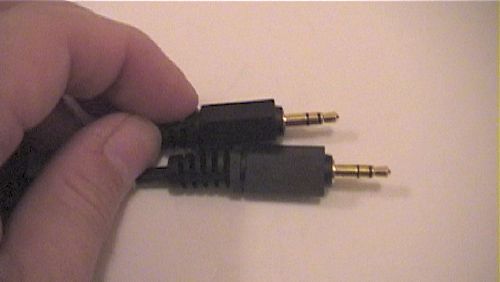
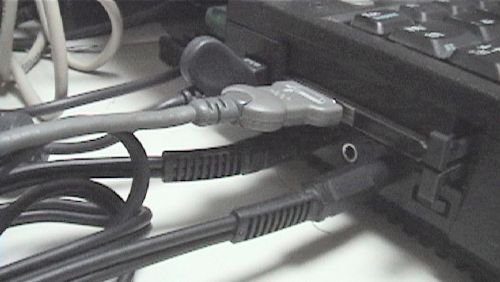
Total Harmonic Distortion (THD) is measured as the ratio of harmonics and fundamental components. Results are displayed in dB or %. Relationship between these two scales is as follows.
-20 dB <-> 10 %
-40dB <-> 1 %
-60dB <-> 0.1 %
-80dB <-> 0.01 %
-100dB <-> 0.001 %
This is the main window of RA. "Line-in" is selected as the input device.

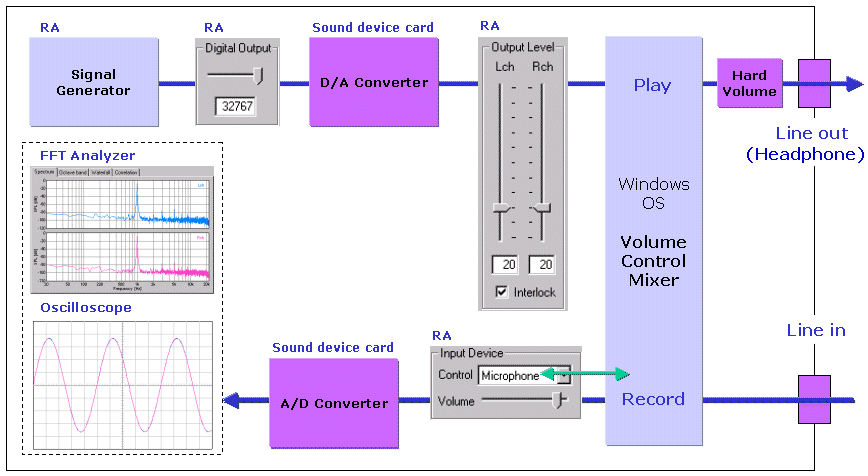
The figure above shows the block diagram of the sound devices in PC. THD analyzer generates the sinusoidal wave by using the Signal Generator, converts the digital signal into analog signal by the D/A converter, and outputs the signal to the mixer through the analog amplifier. Mixer outputs the signal to the cable through the headphone amplifier and "line-out" jack (or headphone out jack). In this measurement, the outputted signal is directly entered to the "line-in" jack, and inputted to the THD analyzer through the mixer, analog amplifier, and the A/D converter. In the previous measurement, signal at the mixer was measured.
The following graph shows the result of the frequency sweep measurement. Comparing with the last time, distortion increases in all frequency. The sound circuit added this time is the headphone amplifier and the line-out jack. Increased distortion might be due to these devices.
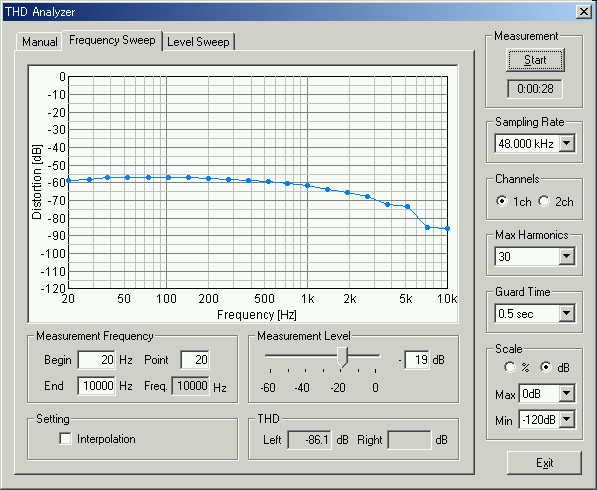
This is a result of the level sweep measurement. Similarly, the distortion increases about 10 dB in all levels. However, distortion between -10 to 0dB is decreased remarkably. The difference is that and the built-in speaker amplifier is not working this time.
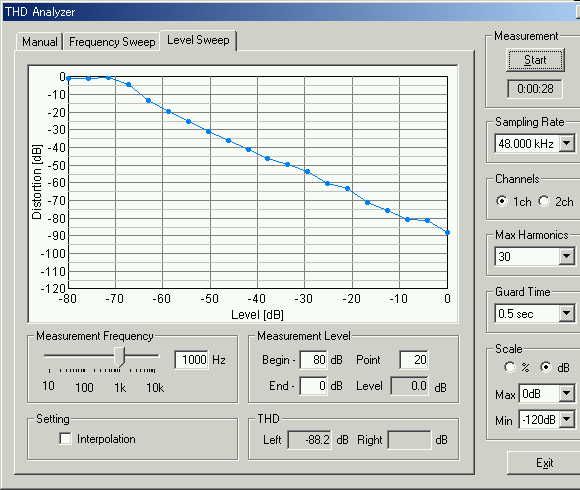
When the distortion was measured with monitoring by the built-in speaker, the same result as last time was obtained. When monitoring by headphones, distortion was limited in the level between -5 and 0 dB as you can see in the following figure. Considering these results, it seems that the built-in speaker of INSPIRON7500 causes large distortion when the max level (0 dB) signal is entered.
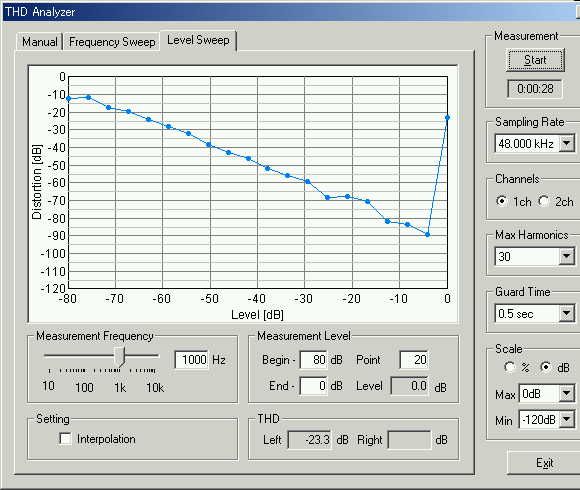
It can be said from the results above that sound should be monitored by headphones, when this PC (INSPIRON7500) is used for the measurement. Built-in speaker should never be used.
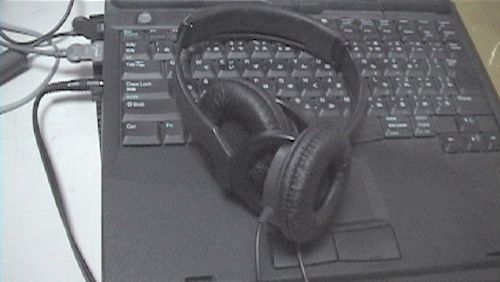
Now, distortion measurement is continued.
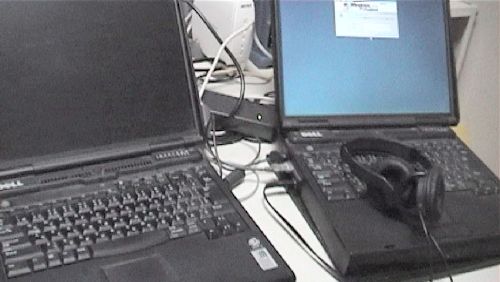
This is a result of the level sweep measurement of another INSPIRON7500 used last time.
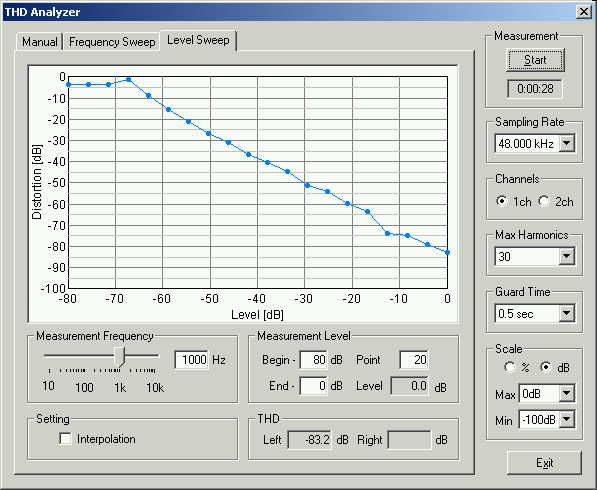
This is a result of the frequency sweep measurement of the same PC.
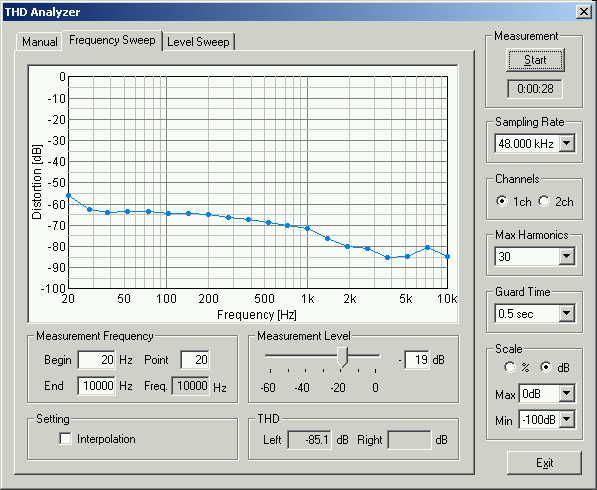
The same PC was measured with monitoring by the built-in speaker. Distortion increases in higher levels.
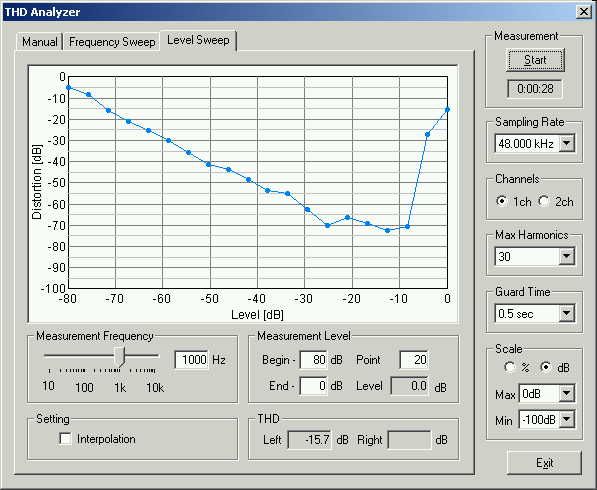
The same PC was measured with monitoring by headphones. Distortion in higher levels is improved. Especially around -20 and -10 dB, distortion decreases about 20 dB.
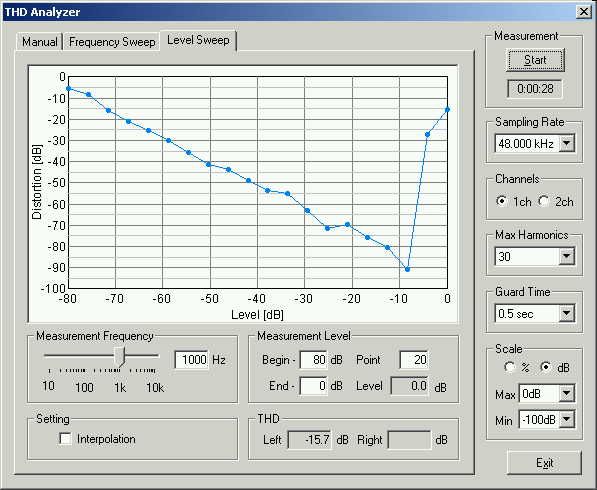
SONY VAIO does not have the line-in jack. So the same test is impossible. In VAIO, external soundcard is needed for the THD measurement.
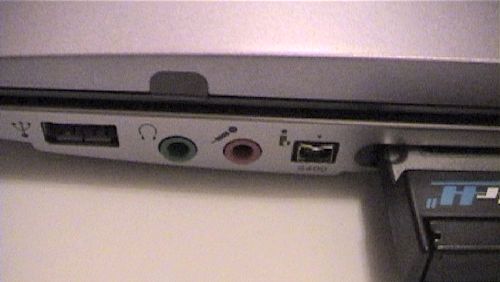
Next, DELL INSPIRON8200 is measured.
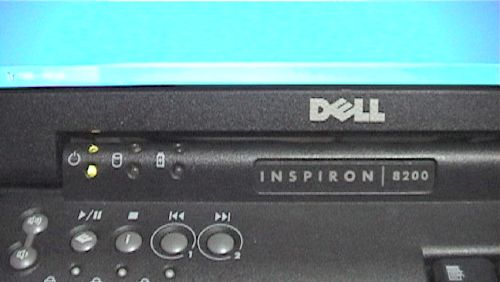
This PC has a sound driver Crystal WDM Audio. In this driver, "Line" could note be selected as a input device. Instead, "stereo mixer" is selected.
Distortion was measured with the output level of -19 dB. Sound is monitored
by the built-in speaker.
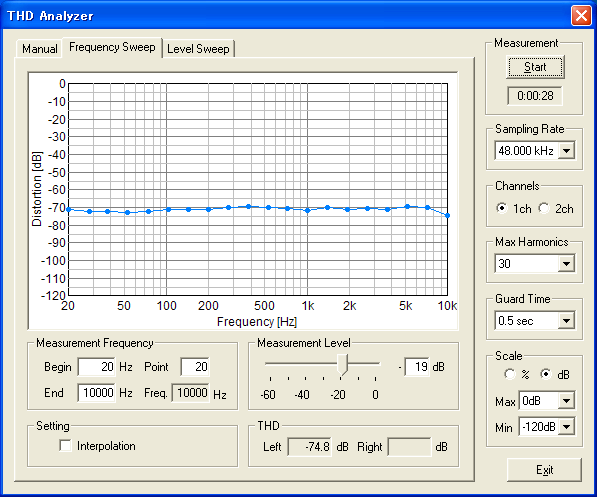
Output level was increased to -9 dB. Distortion slightly decreased in all frequency.
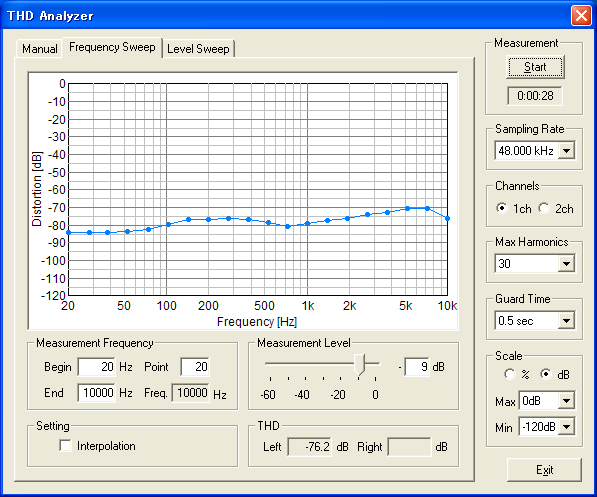
Next, distortion for level sweep was measured.
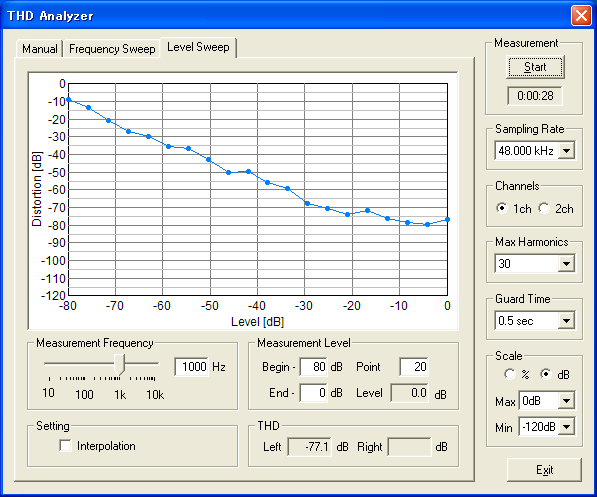
Now, the line-in jack and the headphone out jack was connected.
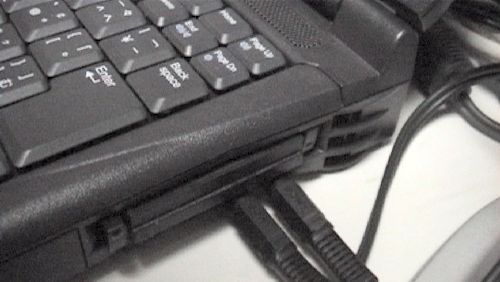
This is a result. Distortion is smaller than when the speaker was used.
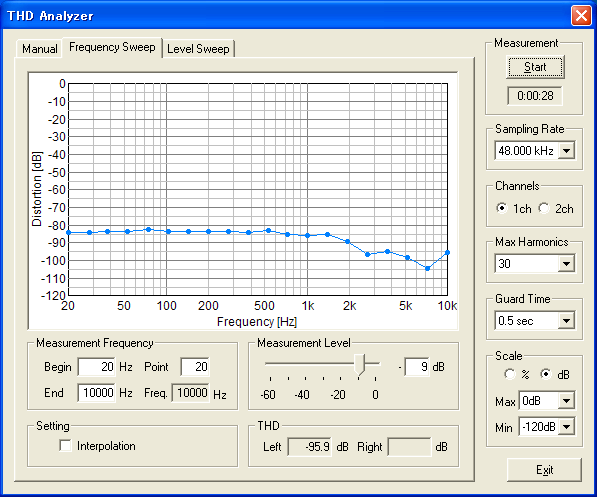
This is a result of the level sweep measurement.
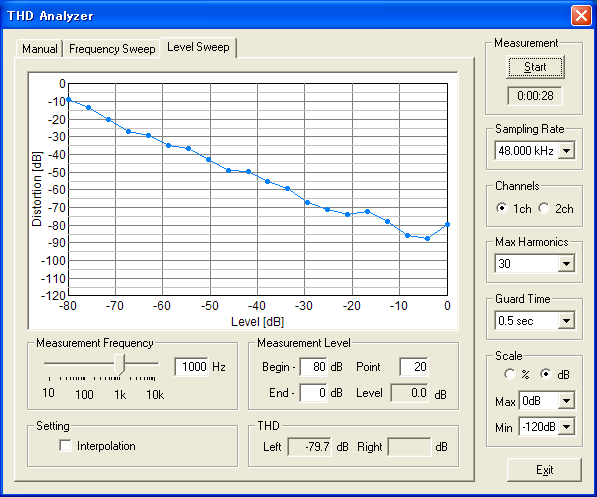
July 2003 by Masatsugu Sakurai